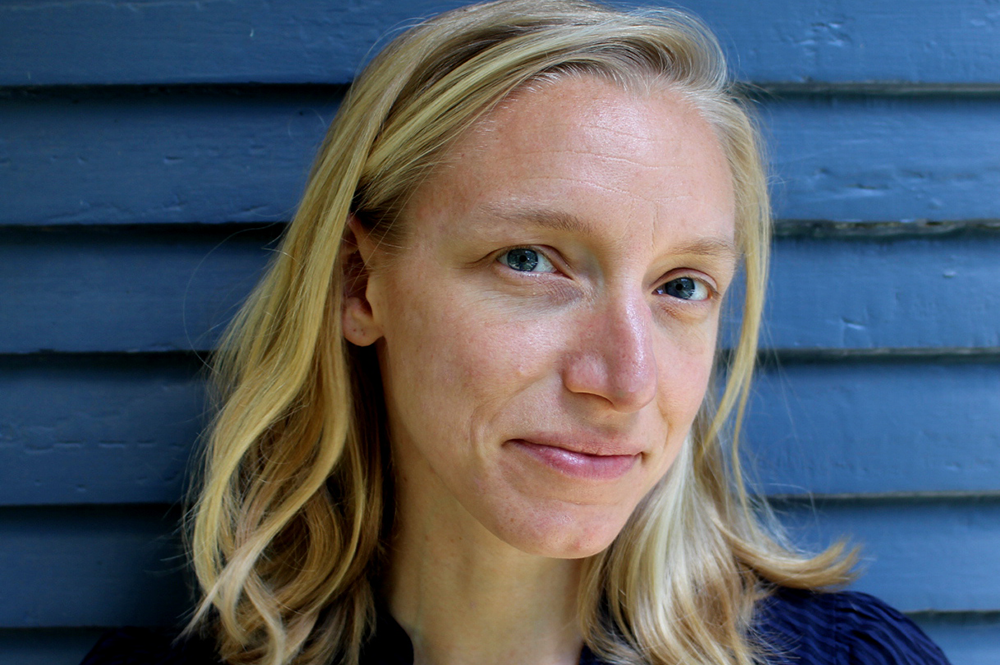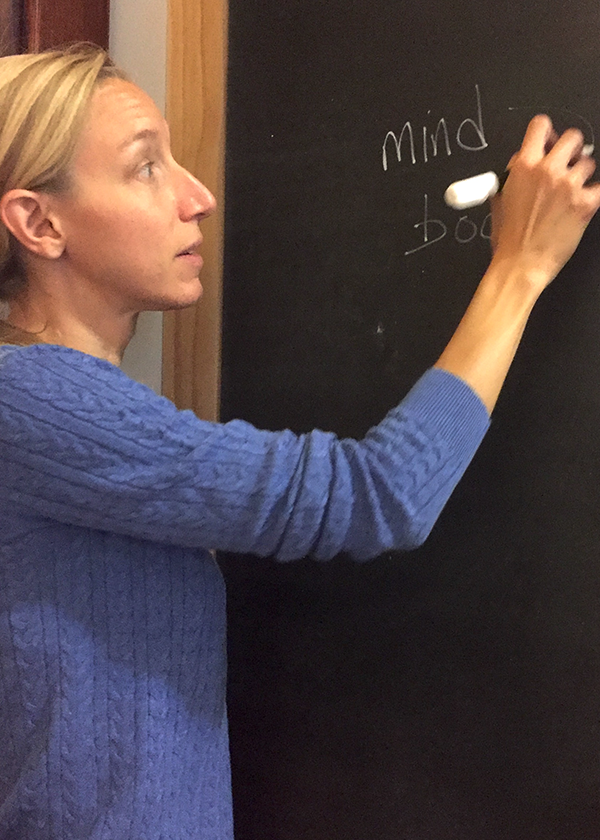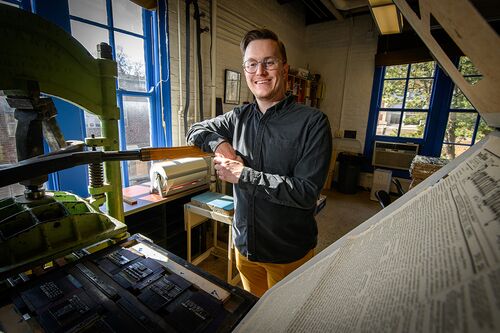Where body meets machine

The growth of wearable technology such as Fitbits and smartwatches has been a gee-whiz moment for many of us. Melissa Littlefield, however, a professor of English and kinesiology and community health at Illinois, understands how the spread of laboratory technology into everyday consumer goods deserves a deeper look.
What are you writing now?
I just finished a book about EEG wearables, "Instrumental Intimacy: EEG Wearables and Neuroscientific Control" (JHUP 2018). Like Fitbits, these wearables promise to measure, track, and help to optimize physiological function—their focus is your brain’s electrical activity. Over the past decade, electroencephalography (EEG) has left the strict confines of the laboratory and become integrated into consumer goods such as baseball hats, headphones, eye masks, bike helmets, and even novelty cat ears. In my book, I contextualize our obsession with body-machine interfaces. I call this “instrumental intimacy” and discuss the development, contemporary promise, and potential peril associated with turning to machines for self-optimization.
Why does this area interest you?
Neuroscience and brain imaging technologies offer us an amazing opportunity to see the body in new ways. But we need to be responsible about the conclusions we draw and the messages we send about what defines normal, optimal, and suboptimal brain functioning. Because I study how scientific knowledge is produced, publicized, and circulated, EEG wearables offer a unique opportunity to consider contemporary scientific and popular discourses about brain functioning.

The past decades have seen incredible growth and interest in the neurosciences—and in critical studies of neuroscientific research from across the sciences, social sciences, and humanities. Broadly speaking, my research has always sought to bring the hard sciences, social sciences, and humanities into conversation about neuroscientific advancements. My most recent book (re)introduces EEG into controversial conversations about brain imaging technologies. While the focus has often been on more flashy technologies, such as fMRI, PET, and now MEG, thinking through EEG’s subtle, commercial developments helps us see and understand the public uptake of the neurosciences in new ways.
How has your field of study changed?
When I began working on the neurosciences and brain imaging in the early 2000s, there were few interdisciplinary conversations about bridging the gaps between the neurosciences, social sciences, and humanities. Since that time, we have seen the development of a new field, Critical Neuroscience; the publication of many books about crossover projects between these fields, including a volume I edited with Jenell Johnson, "The Neuroscientific Turn"); and the practical reality of scientific studies involving truly interdisciplinary teams across the neurosciences, social sciences, and the humanities. It’s an exciting time to be involved in neuroscientific studies of all kinds.
What is your most significant achievement?
In 2009, my team was selected as the winner of the European Neuroscience and Society Network’s novel experimental contest. As a result, we were able to carry out a project I had been contemplating for many years: an fMRI experiment concerning socially-stressful truth-telling. Our hypothesis was that such truth-telling could activate similar regions to those identified during fMRI lie detection experiments, thereby offering a challenge to neuroscientific research about lying and the brain. Our experiment bore out the hypothesis and offered me and my fellow researchers an amazing opportunity to be involved in and analyze neuroscientific research from the inside-out.
Editor's note: This LAS Experts profile is part of a series to highlight the groundbreaking work by faculty in the College of LAS. Visit here for other profiles.








